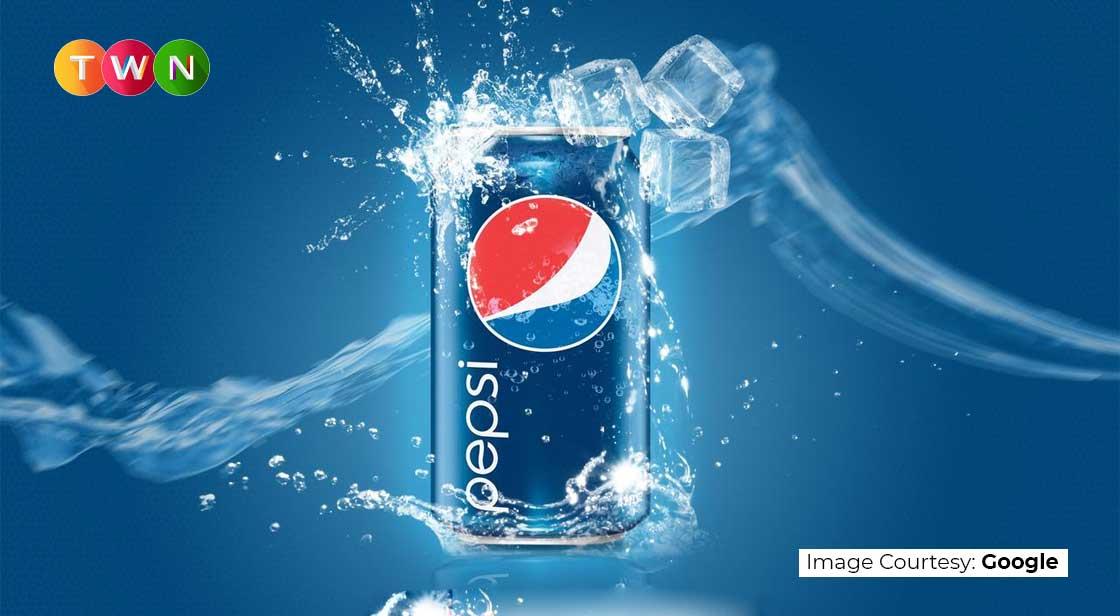Surprising Logo History of Pepsi

Blog Post
Pepsi Cola is one of the world's most recognizable brands, almost as well known for its commercials as it is for its never-ending battle with rival soft drink Coca-Cola. Pepsi has grown from its humble beginnings in a North Carolina pharmacy more than 125 years ago to a product available in a variety of formulations. Today, we will explore the History of the Pepsi Logo. #TWN
Many timeless brands are timeless because they retain well-known and trusted logos. Pepsi is an excellent example. The Pepsi logo has undergone numerous redesigns throughout its history. The logo has been redesigned 12 times in its 122-year history. Not to mention the minor changes for flavor variations such as Diet Pepsi and Pepsi Max.
Pepsi keeps delivering the flavors and brand experience that people expect, no matter how many times its logo changes.
History of Pepsi Logo
What is the history of the Pepsi logo? And how does it manage to remain so recognizable despite each drastic redesign? Let's see what happens!
1893: Brad’s Drink
Before Pepsi became Pepsi, it was known as Brad's Drink, which was invented in 1893 by pharmacist Caleb Bradham in New Bern, North Carolina. During the same time, pharmacists invented many of the sodas we know and love today. Coca-Cola was created in 1886 to help its inventor overcome his morphine addiction. Later that decade, pharmacist Charles Alderton created Dr. Pepper to aid digestion and as a lemon, nutmeg, and caramel-flavored alternative to popular soda flavors at the time.
Brad's Drink used a blue wordmark on a white background for its logo. The font was bold and fairly ornate, which the Pepsi logo would retain for some time after changing colors and becoming known as Pepsi-Cola.
1898-1940: Red and Swirly
Brad's Drink was renamed Pepsi-Cola in 1898, a name derived from the word "dyspepsia," another word for indigestion. (Recall that soft drinks were once thought to be medicinal aids.)
The Pepsi-Cola Company expanded rapidly from there. Bradham officially trademarked the name in 1903, and within a year, he'd sold 20,000 gallons of Pepsi-Cola syrup. There were 240 Pepsi-Cola bottling franchises in 24 states by 1910. The company's logo changed three times as it established itself and grew.
The first was Pepsi's thin, red, and spiky logo.
When Brad's Drink was renamed Pepsi-Cola, the main color of the logo was changed to an eye-catching red. The original font's serifs and mid-height letter spikes became longer, with fang-like spikes protruding from the tops and bottoms of the letters, and the final "A" stretched out and coiled upward like a tail.
One thing remained constant: Pepsi-branding Cola as a health drink. Pepsi tagline Cola's at the time was "Exhilarating, Invigorating, Aids Digestion."
The logo became a little softer in 1905. The spikes retracted, and the letters grew slightly wider. Overall, the logo retained its wavy, swoopy shape, and the final "A" retained its tail curl. A long banner extends from the top of the "C" in Cola in this version of the logo, making it feel a little more symmetrical than the first version.
The logo then changed again a year later. It was still red, wavy, and looked eerily similar to the logo of another cola company (more on that in a minute). The 1906 Pepsi-Cola logo thickened the letters again and condensed the wordmark, making the letters "P" and "C" slightly taller than the rest of the letters.
Pepsi Company also made a few significant changes:
- The spiky serifs reappeared.
- The word "Pepsi" was shifted to an incline, which gave the logo more energy.
- The word "drink" was added to the top banner of the C, incorporating a call-to-action into the logo.
It was also the last time a colon separated the words Pepsi and Cola.
Let us take a moment to discuss the similarities between Pepsi and Coca-Cola during this period. Pepsi Company was decades away from being positioned as the young, hip alternative to Coke. Both drinks were marketed as health drinks, with wavy, swooping, semi-cursive wordmark logos in red and white.
The 1920s and 1930s were difficult years for Pepsi-Cola, and it appeared that they would be the losers in the burgeoning cola wars. Pepsi-Cola declared bankruptcy and was then purchased by Craven Holdings Corp. as Coca-Cola opened bottling plants in Europe and came under the leadership of Robert Woodruff, who would lead the company for the next 60 years. Pepsi-Cola declared bankruptcy for the second time in 1930.
Even though the brands have a very similar visual feel, Pepsi-Cola kept the red and white ribbon logo until 1950, only updating it once for a more pared-down look in 1940.
The 1940 logo, like previous Pepsi-Cola logos, was created using classic lettering. The serifs on the wordmark's smaller letters shrink again, becoming almost invisible, and the wordmark's larger letters become taller and wider in the 1940 version of the Pepsi logo. Cola's Overall, the text became thinner, giving the logo a less condensed appearance.
1950: A Third Color Changes Everything
Pepsi is now associated with the color blue. It's the "blue team," as opposed to Coke's "red team." Before 1950, however, Pepsi and the color blue had no relationship—that is, until they unveiled their bottle cap logo. The wordmark remained unchanged, but it was now printed on a tangible canvas rather than floating in space. Making the logo red, white, and blue just made sense in the wave of patriotism that followed World War II.
In the 1950s, Pepsi-Cola maintained its position as the soda with the best value. The tagline of the day was "More bounce to the ounce," which promised more than just more soda per bottle than Coca-Cola. It promised more enjoyment.
Pepsi's ads of the day also portrayed Pepsi as the ideal drink for a day at the beach or an evening out with friends. It was marketed as a light refreshment and the soda that refreshes without filling you up, making it ideal for beautiful young women who wanted to keep their trim figures.
1962: No More Cola
It was a defining moment for the Pepsi brand. Two significant changes occurred: the logo bottle cap now lay flat, and Pepsi-Cola dropped the word "cola." From then on, it was all Pepsi.
Pepsi also dropped the word "Cola" and the swoopy, swirly red font that had been used for the previous 64 years. With a bold, sans serif, stamp-like black wordmark across the bottle cap, Pepsi told the world who they were. Pepsi had become a drink "for those who think young" since 1958, implying that Coca-Cola was for those who didn't, those who were stuck in old mindsets and unconnected to the youth culture of the day.
The Pepsi logo became more symmetrical in the 1960s. Pepsi was niching down its target demographic and overtly marketing itself to younger consumers with this more modern, geometric-feeling logo and minimalist, even brutalist font, referring to them as the "Pepsi Generation" in a 1961 ad campaign.
Diet Pepsi was introduced by Pepsi in 1964, giving drinkers an even lighter soda option with no sugar.
1973: From Bottle Cap to Globe
When Pepsi switched to the globe logo in 1973, it embraced 1970s minimalism. It was a fairly simple modification; the bottle cap simply lost its ridges.
But Pepsi did more than just smooth out the ridges on the cap. The logo had a colored background for the first time in the brand's history. With red on the left and light blue on the right, white was saved for the globe's outline and the stripe across the center that served as the background for the word "Pepsi." The font remained unchanged from the previous iteration of the logo, but it was shrunk to fit within the globe's perimeter. And then it turned blue.
With the Pepsi Challenge, Pepsi decided to challenge Coke's market dominance in 1975. Pepsi launched the Pepsi Challenge in 1975 to prove to the world that their soda tasted better than Coca-Cola. Passers-by in malls and other high-traffic pedestrian areas would be asked to perform blind taste tests of Coke and Pepsi and vote on which they preferred. People preferred Pepsi over its competitor, according to Pepsi.
The 1980s: The Cola Wars Rage On
The Cola Wars, however, did not end there. They were just getting started. By the early 1980s, Pepsi was riding high on its status as the preferred drink among consumers, outselling Coca-Cola in supermarkets. Isn't Pepsi the winner of the story? Nope.
Coke, not to be outdone by the sweeter soda, changed its recipe and introduced New Coke to the world. And people despised it. But it didn't turn them against Coke. And it did not propel Pepsi to the top of the soda market. Following a massive consumer backlash against New Coke, Coca-Cola reintroduced the original recipe as Coke Classic, then quietly phased out New Coke so Coke Classic could once again be Coca-Cola.
And Coca-Cola was exactly that: a classic. Old-school. Santa Claus has given his approval. Pepsi, on the other hand, was endorsed by Michael Jackson and Michael J. Fox. Pepsi was modern and energetic; Pepsi didn't need to change its recipe to meet the needs of today's drinkers.
Pepsi gave the globe logo a makeover in 1987. And, while the facelift appears to be minor, there is one major change (along with a few minor changes) that occurred with this update.
Pepsi had been using a basic, all-capital sans serif font since 1962. The brand debuted its own distinctive font in 1987. It was still bold and sans serif, but instead of basic block letters, it had a futuristic, almost digital feel to it. The "P"s were stretched out, and the left-side angles of "E"s were rounded off, while the "S" became longer flattered and a little more like the "S" in the Star Wars logo. This custom font would be used by the brand for over a decade.
But that wasn't the only thing that had changed. The white circle that forms the globe's outline became slightly thicker, and the red in the logo became slightly violet-er.
Pepsi dropped this logo after a few years, but it wasn't the last time the world saw it. Pepsi introduced Pepsi Throwback in 2009, a version of the soda made with real sugar rather than high fructose corn syrup.
1991: The Breakup
Pepsi changed its logo again in 1991, this time in a big way. They kept the wordmark and the globe, but for the first time in history, they were separated. The globe moved to the bottom right corner of the logo, while the word "Pepsi," now italicized, stretched across the top in blue. A red bar appears in the negative space beneath the text and beside the globe, reminiscent of the red banner on previous versions of the logo.
By slanting the font forward, Pepsi communicated that it was a forward-thinking soda brand. The Cola Wars were over by the 1990s, and each side's territory was clear. Pepsi and Coke were not only American cultural icons in their own right, but their rivalry was as well. The Cola Wars were even mentioned by Billy Joel in his 1989 song "We Didn't Start the Fire."
1998: The Role Reversal
Pepsi changed the way the colors in their logo were used in 1998. The logo was now on a blue background with the word "Pepsi" in white, rather than blue text on a white background.
The red in the background had vanished, and the globe had moved up and over to sit just below the wordmark. In addition, unlike previous versions of the logo, the 1998 edition had depth. A gradient background gave the impression that the globe was emitting light and shadows just behind the text, creating a 3D effect. The globe was not outlined in white for the first time since Pepsi began using it. It was just there, shedding light on the blue background.
Pepsi introduced a new slogan and brand campaign, "The Joy of Cola," in 1999. The brand was ready for the new millennium with a brand-new jingle and a series of commercials.
In just two years, "The Joy of Cola" became "The Joy of Pepsi," and in true Pepsi fashion, featured none other than Britney Spears, one of the day's hottest artists.
2003: Going 3D
Pepsi's new logo was slightly altered in 2003. The globe was redesigned to include large, visible white "shine" spots that made it appear as if it had been vacuum-sealed in plastic, giving the logo a more appealing appearance.
The background gradient was shifted to make the lower-left corner, rather than the globe, the light source, and both the wordmark and the globe were outlined in light blue to stand out against the background.
The text was also given a makeover. Small serifs were reintroduced to the font, and the letters were given a light grey shading to enhance their three-dimensional appearance.
2006: Pepsi Gets Cooler
Pepsi established itself as the cool soda brand during the Cola Wars. And they never lost their cool. However, in 2006, the logo was literally cool.
This logo iteration transformed the now fully three-dimensional globe into a cold glass of soda with glistening droplets of condensation on its surface. The font remained bold and slanted forward, as it had in the 2003 version.
2008: A Global Cola Leader
The 2006 version was cool, but by 2008, it was time for a new look. Pepsi was due for a significant change this time around. Pepsi famously paid Arnell Group more than $1 million to design their next logo, which resulted in:
The 3D globe had returned to its flat state. The world's favorite Pepsi font had vanished, replaced by Pepsi Light by Gerard Huerta. There will be no more serifs, no more uppercase letters, and, perhaps most importantly, no more symmetrical bands across the globe. The globe was now turned on its side, revealing a band that is wider where the globe faces upward and narrower toward the bottom.
The new logo makes me happy. This Pepsi was still youthful and fun, but it was also welcoming. It was approachable, entertaining, and decidedly unpretentious. And sometimes, even a little snarky.
Not everyone was happy. Many people criticized it for being overly simple and even lazy, especially when compared to other, similar logos such as Obama's and Korean Airlines.'
Others described it as cheap and soulless. Critics slammed Arnell Group for being pretentious and ridiculous after they publicly discussed the science behind the logo, such as their use of the Golden Ratio to determine the perfect angle for the globe and comparing it to the Mona Lisa. Despite the overwhelmingly negative public reaction to the redesign, Pepsi stuck by its decision to rebrand and tweaked the logo slightly in 2014, removing the blue outline around the globe.
The Future of the Pepsi Brand
Who knows what the Pepsi logo will look like in ten, twenty, or fifty years? While we can guess what Coke's logo will look like, Pepsi has made constantly reinventing themselves—and reintroducing old logos in new ways—a key part of their brand.
Whatever happens in the world or the beverage industry, Pepsi will be there, reformulating themselves to satisfy their fans' tastebuds.
You May Like
EDITOR’S CHOICE












